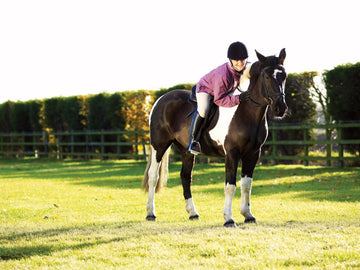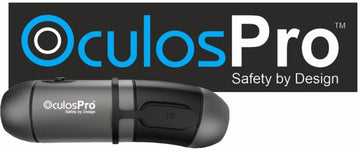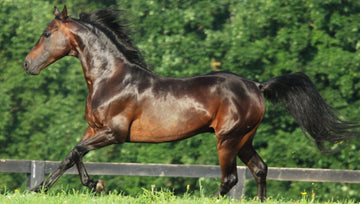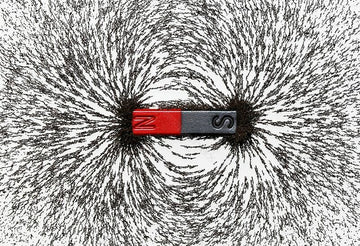Feeding our horses to keep them in the best possible condition can cause a headache for many of us, especially if we own a particularly good doer. Dependent on age, breed and work load, horses will naturally tend to carry different proportions of fat and muscle and it is important that we ensure our horse’s diet provides the appropriate calories (or energy) to maintain a healthy weight, whilst, alongside correct work, giving them ‘building blocks’ for muscle development. Condition scoring is a useful tool for assessing whether your horse is under, over or at about the correct weight. A 1-9 scale is often used, with a score of 1 meaning the horse is very poor, and 9 being very overweight. When condition scoring, it is important not just to look at your horse’s waistline, but also his neck and hind-quarters.
Domestic horses lead a very different life to the one they would have led in the wild, where a lot of their time they would have been on the move and foraging for food. Native ponies especially are designed to survive on very poor quality grazing and to put on excess weight over the summer months in preparation for the harsher winter months when food is less available. In reality, very few domesticated horses face this problem, so without this winter weight loss, it can become very difficult to control their waistlines.
Spring is often a time of particular concern as the weather is starting to warm up and the grass is almost visibly growing. In order to make life easier for both you and your horse, it is important that calorie intake is strictly controlled at this time to prevent rapid weight gain. There are a number of options including limited turnout, grazing muzzles, and strip or track grazing techniques but all of these could lead to your horse going for considerable amounts of time with very limited fibre intake. Even at this time of year, we would always recommend your horse receives a minimum of 1% (dry matter) of his bodyweight in forage intake each day (eg. 4.5kg for a 450kg horse) as this will maintain gut motility and reduce the chances of digestive upsets or complications due to insufficient fibre flowing through. This leaves the dilemma of what to feed. Whilst stalky, late cut hay often undeniably has a low calorie level, it may be of particularly poor quality, be dusty and mouldy leading to respiratory problems, or just quite simply be unpalatable to your horse. Unless you pay to have an analysis of your hay done, it can also be difficult to know exactly what sugar, energy and protein it is providing, and if we have weather that is especially favourable for hay making, even the coarsest looking bale may have a surprisingly high WSC (sugar) content. Another option is to choose an appropriate dust-free bagged forage product that is low in starch and sugar and calories. This type of product goes through a unique fermentation process and will provide a sugar level that is consistently lower than good quality hay, is low calorie and yet still provides high levels of fibre.
If your horse tends to be very greedy with his forage, tips such as using small mesh nets, double (or even triple!) netting, hanging small nets scattered around the horse’s stable/starvation paddock so he has to move around, and splitting the nets up into as many ‘feeds’ as possible throughout the day will all help to eke out his ration and ensure he is never standing for too long with nothing to eat.
A further complication with good doers is ensuring they receive sufficient vitamins and minerals. Often these individuals are given a token feed, far smaller than the manufacturers’ recommended amounts and so resulting in compromised vitamin, mineral and protein intake. Vitamins and minerals are essential in almost all bodily functions from maintaining a healthy metabolism, to hoof and bone growth and development. Likewise, although an overweight horse should certainly not receive an excess of protein in his diet, ‘good quality’ protein is important as the essential amino acids it provides (amongst other things) supplies the building blocks to maintain muscle tissue, support healthy hoof growth, and improve coat quality. Choose a high fibre, complete feed product that has been specially formulated to take into account the dietary requirements of horses that need a low calorie diet, and when fed at the correct weight, will supply everything they need but with a very low this type of feed, there is no need for any further bucket feed, and when fed alongside the appropriate forage, it provides a fully balanced diet…and an easier life for you!
Top Tips:
- Never starve an overweight horse. Not only can this cause serious digestive upsets, but it can also put your horse at risk of a condition called hyperlipemia.
- Prevention is better than cure; be very vigilant at high risk times and restrict your horse’s access to spring grass before it causes a problem.
- Feed the correct amount of a low calorie feed rather than a reduced amount of a maintenance/competition feed.
- Choose your forage carefully. This will be the bulk of your horse’s diet so ensure it is appropriate for his dietary needs.
- Don’t forget vitamins and minerals - many a horse branded lazy has developed a new lease of life once they receive a fully balanced diet!
Article courtesy of HorseHage & Mollichaff www.horsehage.co.uk





